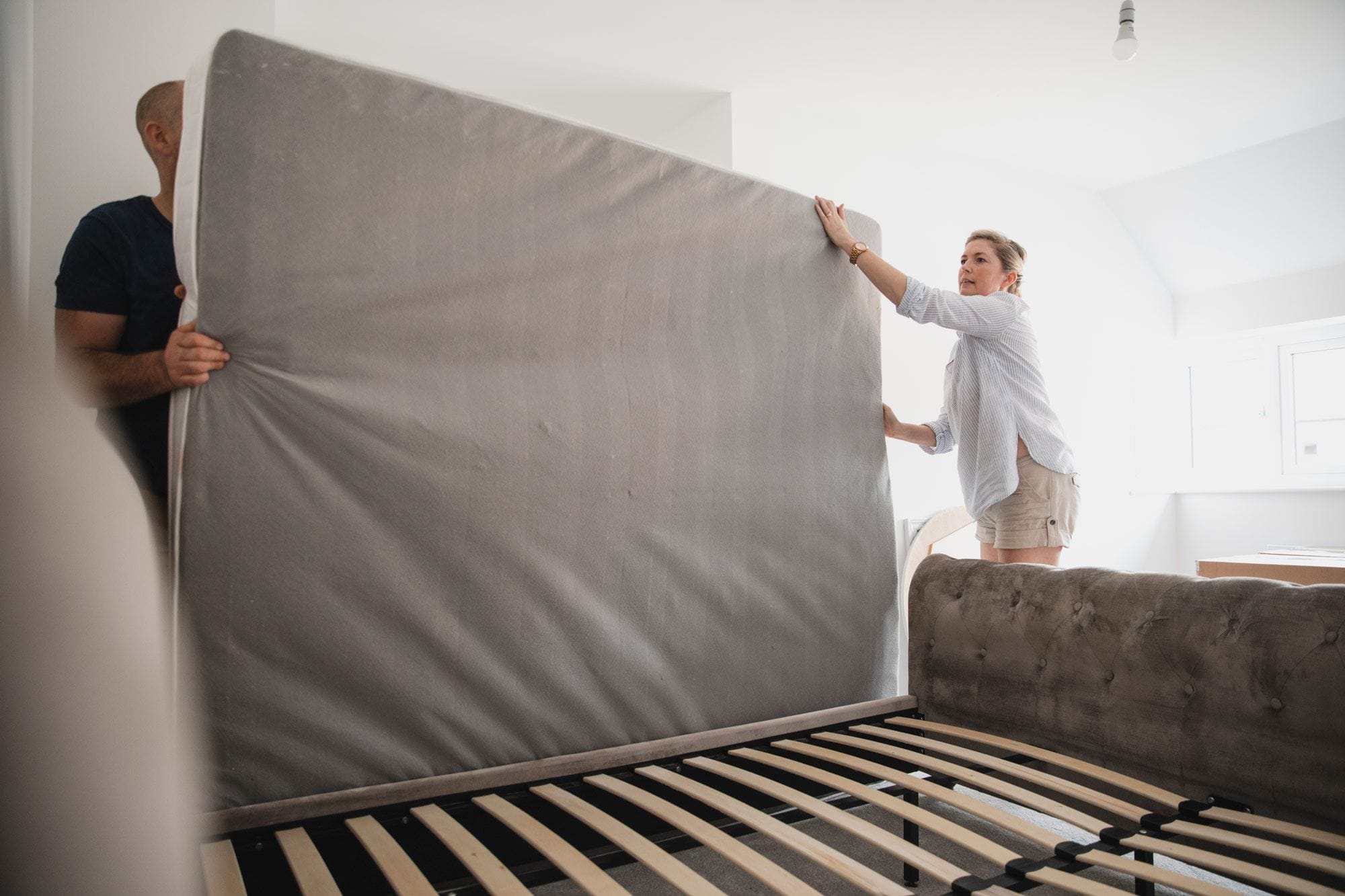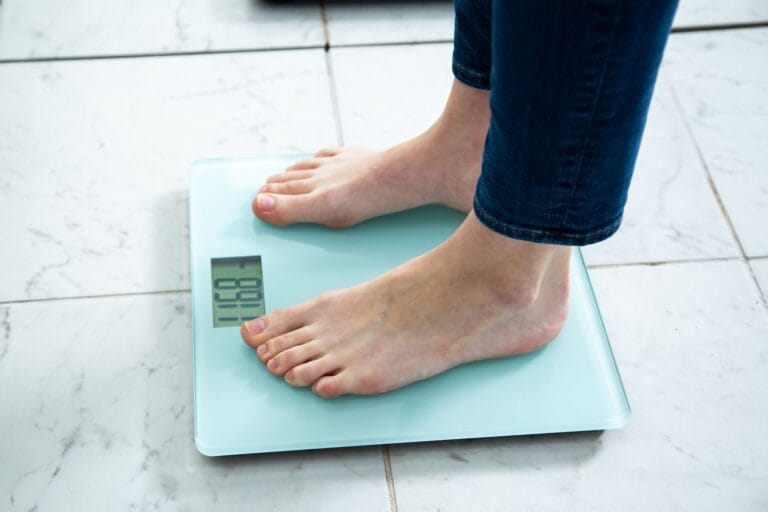
Looking to store a mattress? Whether you’re moving, downsizing, or simply need some extra space, we’ve got you covered. In this guide, we’ll walk you through the steps on how to properly store a mattress to keep it clean, protected, and ready for future use. So, let’s dive in!
When it comes to storing a mattress, proper preparation is key. Before you start, make sure your mattress is clean and dry.
Give it a good vacuuming to remove any dust or debris, and check for any stains that may need to be treated. Once your mattress is prepped, you’re ready to move on to the next step.
To ensure your mattress stays in top shape while in storage, it’s important to choose the right storage location. Look for a cool, dry area away from direct sunlight and moisture.
Attics, basements, or climate-controlled storage units are all great options. Now that you have the perfect spot, let’s move on to the final step in storing your mattress.
Before you place your mattress in storage, it’s crucial to protect it from potential damage. Cover it with a breathable mattress bag or a fitted sheet to shield it from dust, dirt, and pests.
Additionally, consider placing a layer of cardboard or plywood under the mattress to provide extra support. And there you have it – a properly stored mattress that will be ready for use whenever you need it!
How to Store a Mattress: A Comprehensive Guide
here is a step-by-step guide to storing a mattress:
- Clean the mattress thoroughly by vacuuming and removing any stains.
- Disassemble the bed frame and remove any bedding.
- Wrap the mattress in a protective cover to prevent dust, dirt, and moisture.
- Store the mattress in a dry, cool, and well-ventilated area.
- Avoid placing heavy objects on top of the mattress.
- Regularly check on the mattress to ensure it remains in good condition.
Follow these steps to store your mattress properly and keep it in excellent condition for future use.
Importance of Proper Mattress Storage
Storing a mattress properly is crucial to maintaining its quality and extending its lifespan. When a mattress is stored incorrectly, it can become damaged, stained, or infested with pests like bed bugs.
Additionally, improper storage can lead to the mattress losing its shape and comfort over time. By following the right storage techniques and precautions, you can keep your mattress in top condition for years to come.
Clean and Prepare the Mattress
Before storing your mattress, it’s essential to clean and prepare it properly. Start by removing all bedding, including sheets, blankets, and pillows.
Next, give your mattress a thorough vacuuming to remove any dirt, dust, or debris that may have accumulated.
Use a handheld vacuum with a brush attachment for best results. For stains and odors, spot-clean the affected areas using a mild detergent and warm water. Allow the mattress to air dry before proceeding to the next step.
Once your mattress is clean, it’s important to protect it from any potential damage during storage. Consider investing in a mattress protector or encasement to shield it from dust, moisture, and pests.
These protective covers are typically made of waterproof material and have a zipper closure to fully encase the mattress. Be sure to choose a cover that is the appropriate size for your mattress.
Finally, before moving your mattress to the storage location, check for any signs of wear or damage. Look for sagging areas, loose threads, or broken springs. Repair any issues or consider replacing the mattress if it’s no longer providing adequate support. Taking these precautions will ensure that your mattress remains in the best possible condition while in storage.
Choose the Right Storage Location
The next step in storing a mattress is selecting the right storage location. Ideally, the storage area should be dry, clean, and well-ventilated. Avoid storing your mattress in damp or humid areas, as this can lead to mold and mildew growth. Basements and garages, unless climate-controlled, are typically not suitable for mattress storage.
If you’re storing your mattress for an extended period, consider renting a temperature-controlled storage unit. These units provide a controlled environment with climate and humidity control, protecting your mattress from extreme temperature fluctuations.
If a storage unit is not an option, choose a room in your home that meets the above criteria and has enough space to safely store the mattress.
When selecting the storage area, ensure that there are no sharp objects or potential hazards that could damage the mattress. Clear the space of any clutter or debris, and if necessary, cover the floor with a clean tarp or drop cloth to provide an extra layer of protection.
Once you’ve chosen the perfect location, it’s time to determine the best storage method for your mattress.
Select the Appropriate Storage Method
There are several storage methods you can choose from depending on your specific needs and available space. The most common methods include storing the mattress flat, storing it on its side, or using a mattress storage bag. Each method has its advantages and considerations, so let’s explore them in more detail.
Storing the Mattress Flat
Storing the mattress flat is the most straightforward method and is suitable for those with ample space. Place the mattress on a clean and flat surface, such as the floor or a sturdy platform.
Ensure that the surface is free of any protruding objects that could damage the mattress. If you’re storing multiple mattresses, make sure to stack them evenly to prevent unnecessary stress on the bottom ones.
While storing the mattress flat is easy, it does take up more space. Additionally, be cautious about placing heavy items on top of the mattress, as they can cause pressure points and affect its shape. If you opt for this storage method, check on the mattress periodically to ensure there are no issues and that it remains in good condition.
Storing the Mattress on Its Side
If space is limited, storing the mattress on its side is a viable option. Start by leaning the mattress against a wall or other sturdy surface.
Place it vertically, with the bottom edge resting on the floor and the top edge secured against the wall. Ensure that the mattress is stable and won’t topple over. This method is ideal for narrow storage spaces, such as closets or narrow storage units.
When storing the mattress on its side, it’s crucial to provide support to prevent it from bending or warping. Consider using a mattress support brace or a stack of sturdy boxes to reinforce the bottom and keep the mattress in its proper shape. Avoid leaning other heavy objects against the mattress, as they can cause indentation or deformities over time. Regularly check for any signs of instability and adjust or reinforce the support if necessary.
Using a Mattress Storage Bag
If you want an extra layer of protection and convenience, consider using a mattress storage bag. These bags are specifically designed to encase the entire mattress, protecting it from dust, moisture, and pests.
To use a mattress storage bag, simply slide the mattress into the bag and seal it tightly using the provided zipper closure. Some bags also come with built-in handles for easier transportation.
A mattress storage bag is a great option for those who need to store their mattress in an area prone to dust or moisture, or for those planning to move the mattress frequently.
However, it’s important to ensure that the bag is made of durable, tear-resistant material to prevent accidental damage during storage or transportation. Regularly check the bag for any signs of wear or tears and replace it if necessary.
Properly Maintaining a Stored Mattress
While your mattress is in storage, it’s important to periodically check on it and perform simple maintenance tasks to keep it in optimal condition. Follow these tips to ensure your stored mattress remains in the best possible shape:
Regularly Clean and Air the Storage Area
Every few months, clean and air out the storage area to prevent dust buildup and maintain good air circulation. Remove any debris or cobwebs and vacuum the area thoroughly.
If possible, open windows or use a fan to improve ventilation. This simple step helps prevent musty odors and keeps the stored mattress fresh.
Rotate or Flip the Mattress
If you’re storing the mattress flat, consider rotating or flipping it every few months. This helps distribute the weight evenly and prevents sagging.
If you’re storing the mattress on its side, there’s no need to rotate or flip it. However, periodically check for any signs of instability or deformation and address them promptly.
Keep Pests at Bay
Pests like bed bugs and dust mites can be a concern when storing a mattress. To prevent infestations, regularly inspect the mattress for any signs of bugs or droppings.
Consider using pest control products specifically designed for mattresses, such as bed bug covers or sprays. Additionally, avoid storing items that may attract pests, such as food or clothes, in the same storage area as your mattress.
By following these maintenance tips, you can ensure that your stored mattress remains clean, fresh, and in excellent condition until it’s time to use it again.
Properly storing a mattress is essential for maintaining its quality and preventing damage. From cleaning and preparing the mattress to selecting the right storage location and method, every step counts.
Remember to clean and protect the mattress before storage, choose a suitable storage location, and select the appropriate storage method based on your space and needs.
Regularly check on the mattress and perform simple maintenance tasks to keep it in great condition. By following these guidelines, you can ensure that your mattress remains in optimal shape for years to come. Sleep tight.
Frequently Asked Questions
In this section, we will address some common questions related to storing a mattress.
1. How can I prepare my mattress for storage?
Preparing your mattress for storage is crucial to keep it clean and in good condition. Start by thoroughly cleaning the mattress using a vacuum cleaner to remove any dust or debris.
Next, treat stains with a gentle cleaner or upholstery cleaner and let them dry completely. Once the mattress is clean and dry, consider using a mattress protector or encasement to prevent any further dirt or damage while in storage.
Afterward, ensure the mattress is properly wrapped or sealed in a plastic mattress bag. This will protect it from moisture, pests, and dust during storage.
Avoid using plastic covers for long-term storage, as they can trap moisture and lead to mold or mildew growth. Finally, store the mattress in a climate-controlled storage area to maintain optimal conditions.
2. Should I store my mattress flat or on its side?
It is generally recommended to store a mattress on its side rather than flat. By storing it vertically, the mattress takes up less space, which is especially beneficial if you have a limited storage area. Storing the mattress on its side also prevents excessive pressure on specific areas, reducing the risk of sagging or deformation over time.
However, if you need to store the mattress flat due to space restrictions, it’s important to rotate it every few months to prevent uneven wear and maintain its shape. Additionally, place a sturdy support, such as a piece of plywood, under the mattress to provide even support and prevent sagging.
3. How long can a mattress be stored?
The length of time you can store a mattress depends on various factors, such as the mattress type, quality, and storage conditions. In general, it is recommended to store a mattress for no longer than 6-12 months to ensure it remains in good condition.
If you’re storing the mattress for an extended period, consider investing in a climate-controlled storage unit. Extreme temperature fluctuations and high humidity can cause damage to the mattress over time. Regularly check the stored mattress for any signs of damage or pests during the storage period.
4. What should I do if my mattress gets wet before storage?
If your mattress gets wet before storage, it’s crucial to dry it thoroughly before storing it to prevent mold or mildew growth. Start by blotting any excess moisture with towels or absorbent cloths.
Then, use a fan or open windows to allow airflow and facilitate drying. Alternatively, you can use a dehumidifier to remove excess moisture from the room.
Once the mattress is completely dry, follow the regular preparation steps for storage, such as cleaning, wrapping, and storing in a suitable container or storage unit. Avoid sealing a damp or wet mattress in plastic, as it can trap moisture and lead to mold growth.
5. Can I store other items on top of my mattress?
It is generally not recommended to store heavy items on top of a mattress as it can cause excessive pressure and lead to deformation or damage. Ideally, store your mattress in an area where it won’t be stacked or have items placed on top of it.
If you need to stack items, it’s essential to place a sturdy and even support, such as a piece of plywood, between the mattress and the items above it.
This will distribute the weight evenly and minimize the risk of sagging or structural damage to the mattress. However, it’s always best to find a separate storage space for your mattress to ensure its integrity and longevity.
Storing a mattress properly is important to keep it in good condition. Start by cleaning the mattress and ensuring it is fully dry. Then, wrap it in a protective cover and store it in a cool, dry place. Avoid bending or folding the mattress, as this can damage it.
If possible, store the mattress flat or on its side. Remember to check the storage area regularly for any signs of moisture or pests. By following these steps, you can ensure that your mattress stays in great shape for future use.






